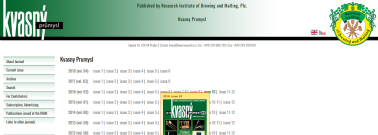Trial comparison of the medieval malt-kilns from Polish and Czech territories on selected examples
DOI:
https://doi.org/10.18832/kp2016004Keywords:
malt kilns, typology, grid, Poland, Czech Lands, archaeological discoveriesAbstract
Malt kilns with complex and specialized construction became popular in Central Europe in the XIVth century. They consisted of two basic elements: heating unit and supported on it the grid (drying floor). Depending on the kind of the construction of these two elements in the late medieval times dominated two types of malt kilns: Type I (Dutch) and Type II (German). The first one had a flat grid supported on the construction in a form of an inverted pyramid, with its top bedded in the kiln furnace. The second type was outfitted with a grid in the form of gable roof, supported on the rectangular kiln, which consisted of combustion chamber connected with fire-tunnel (praefurnium, flue). The German Type (also known as Polish) malt kilns, due to the placement of the fire-tunnel (flue) can be differentiated into two subtypes: 1 – with its entrance in the short side of combustion chamber, and 2 – with its entrance in the long side of combustion chamber.







